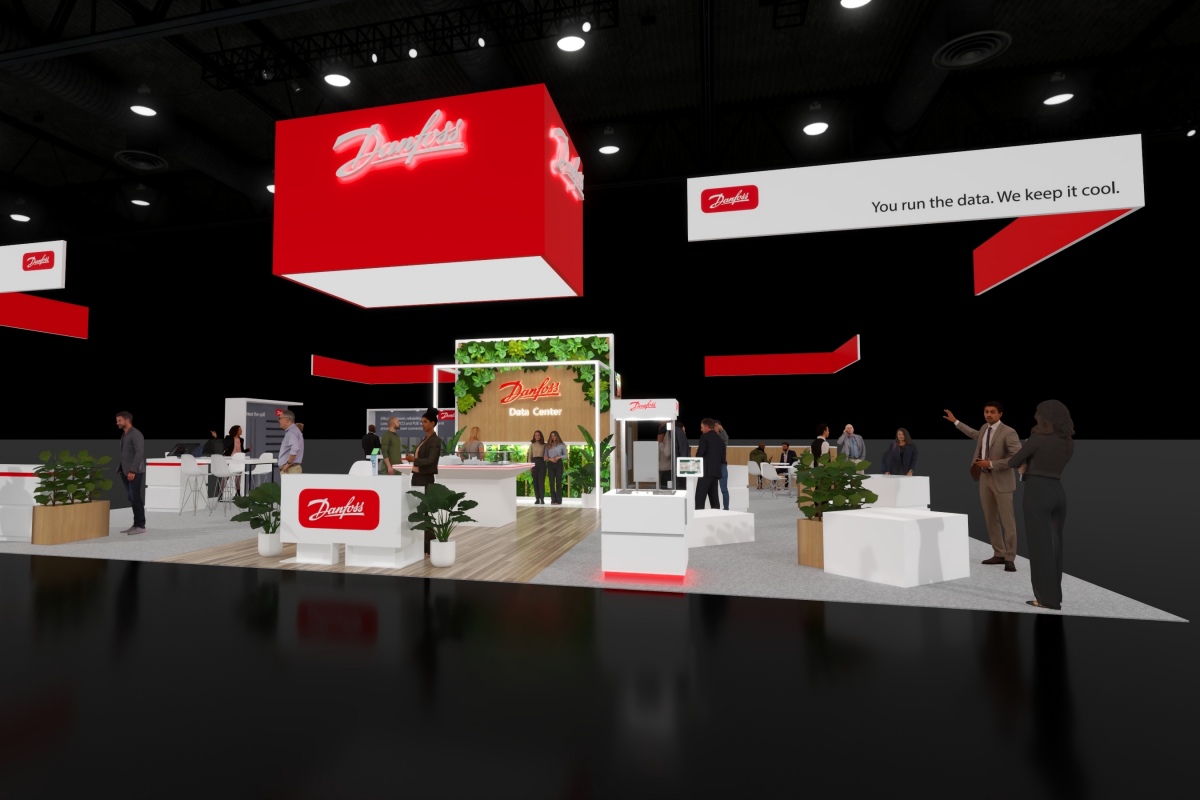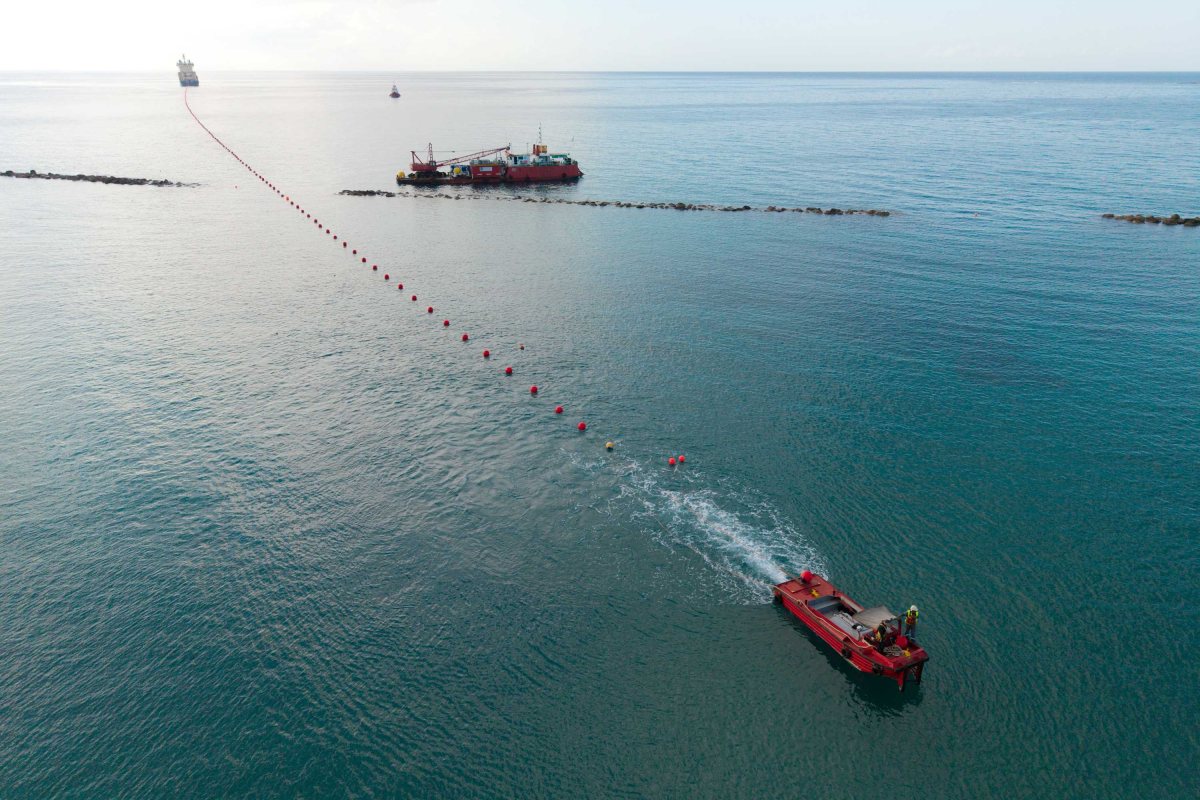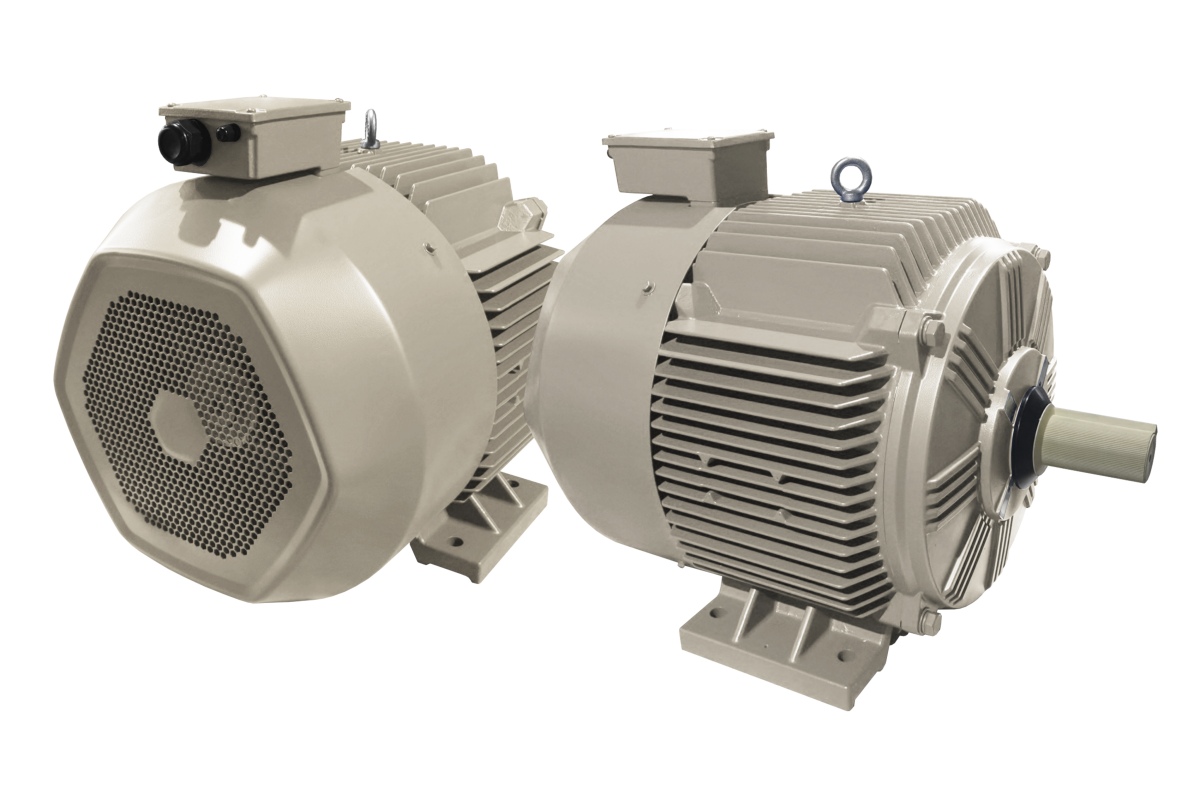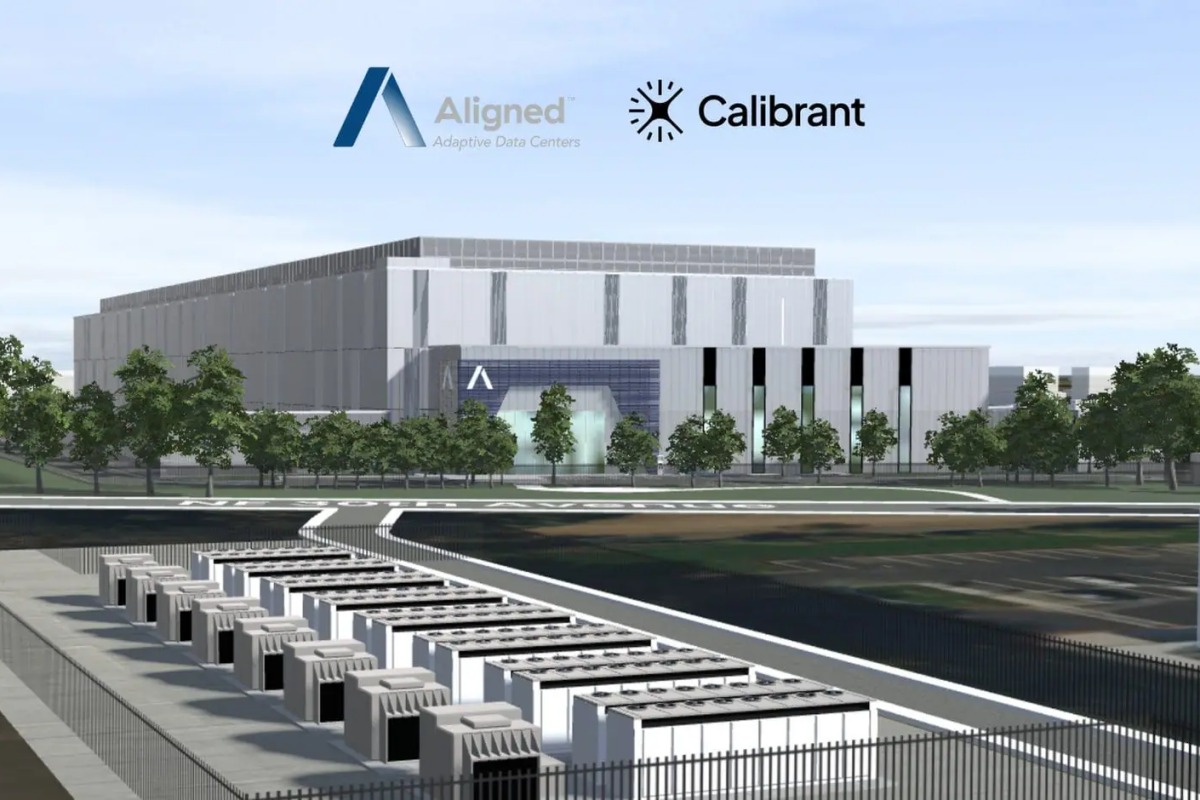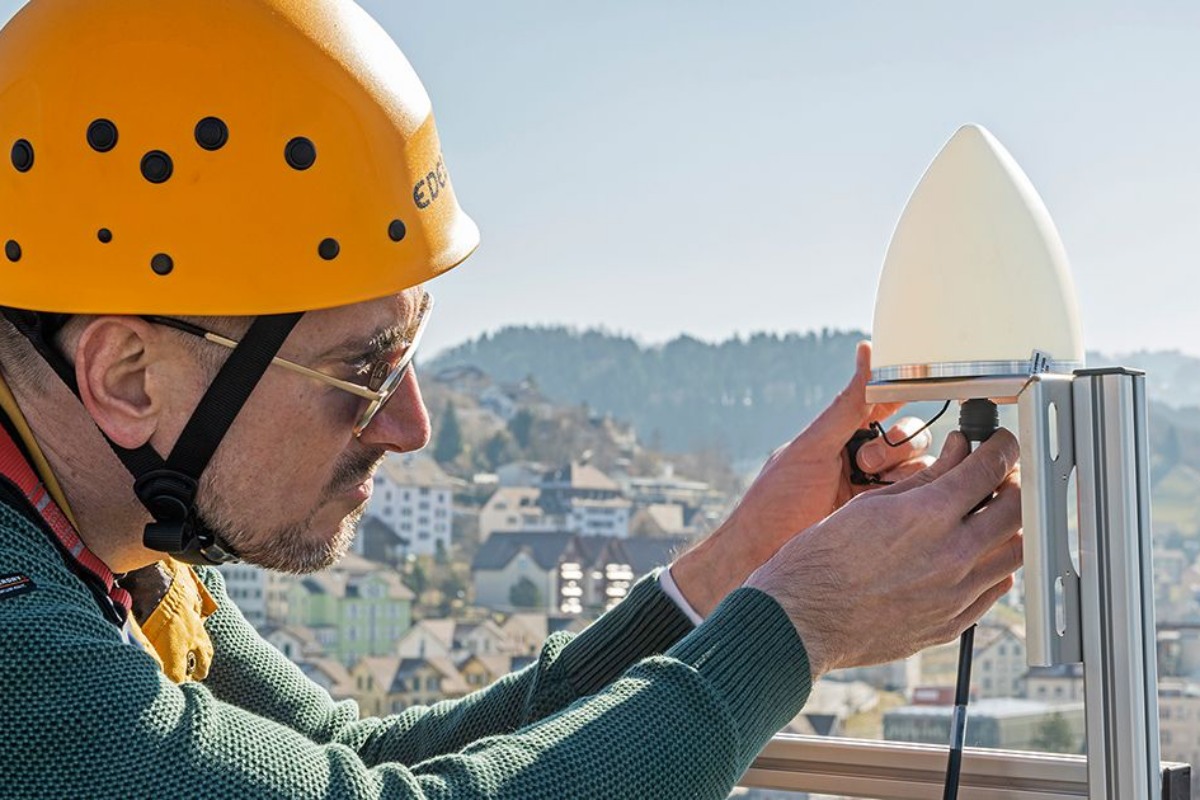Data Centre Infrastructure News & Trends
Data Centre Infrastructure News & Trends
Events
Innovations in Data Center Power and Cooling Solutions
News
Danfoss to showcase DC technologies at SuperComputing 2025
Danfoss, a Danish manufacturer of mobile hydraulic systems and components, plans to present its data centre cooling and power management technologies at SuperComputing 2025, taking place 18–20 November in St Louis, Missouri, USA.
The company says it will demonstrate equipment designed to support reliability, energy performance, and liquid-cooling adoption in high-density computing environments.
Exhibits will include cooling components, liquid-cooling hardware, and motor-control equipment intended for use across data hall and plant-room applications.
Danfoss notes that increasing data centre efficiency while maintaining uptime remains a central challenge for operators and developers, particularly as AI and high-performance computing drive increases in heat output and power usage.
Peter Bleday, Vice President, Specialty Business Unit and Data Center at Danfoss Power Solutions, says, “Danfoss technologies are trusted by the world’s leading cloud service providers and chip manufacturers with products installed in facilities around the world.
"We look forward to welcoming visitors to our booth to discuss how we can help them achieve smarter, more reliable, and more sustainable data centre operations.”
Cooling and power management focus
Danfoss will present liquid-cooling components including couplings, hoses, and valve assemblies designed to support leak-tested coolant distribution for rack-level and direct-to-chip cooling.
A smart valve train system providing plug-and-play connection between piping and server racks will also be shown, designed to help optimise coolant flow and simplify installation.
The company's HVAC portfolio will also feature, including centrifugal compressor technology engineered for high efficiency and low noise in compact installations. Danfoss states that this equipment is designed to support data centre cooling requirements with long-term performance stability.
In addition, the manufacturer will highlight its power-conversion and motor-control portfolio, including variable-frequency drives and harmonic-mitigation equipment intended to support low-PUE facilities.
The business says its liquid-cooled power-conversion modules are designed to support applications such as energy storage and fuel-cell systems within data centre environments.
Danfoss representatives will also discuss the company’s involvement in wider sustainability initiatives, including the Net Zero Innovation Hub for Data Centers, where industry stakeholders such as Google and Microsoft collaborate on energy-efficiency and decarbonisation strategies.
For more from Danfoss, click here.
Joe Peck - 31 October 2025
Data Centre Infrastructure News & Trends
Enterprise Network Infrastructure: Design, Performance & Security
News
Arista unveils 800G R4 series networking portfolio
Arista Networks, a provider of cloud and AI networking systems, has introduced a new generation of R4 Series networking platforms designed for artificial intelligence, large-scale data centre environments, and routed backbone deployment.
The new systems are intended to support high-performance compute clusters, low-latency operation, and large routing backbones.
According to Arista, the portfolio is designed to provide high port density and support for 800-gigabit ethernet networks, with integrated security features for encrypted traffic.
Seamus Crehan, President of Crehan Research, says, “The 800GbE market is growing explosively with port shipments more than tripling sequentially in Q2 '25, and Arista led in branded market share for both 800GbE as well as overall data centre ethernet switching.
"These new 800GbE products from Arista are well-timed to capitalise on this segment’s projected 90% five-year average annual growth rate driven by AI, storage, and general compute workloads.”
Arista states that the new systems are designed to reduce operating costs and energy consumption in AI and data centre environments, while supporting routing technologies such as EVPN, VXLAN, MPLS, and SR/SRv6.
The company also highlights engineering for predictable latency and packet-handling performance.
Focus on high-density 800G networking for AI
Arista says the platforms are aimed at workloads including AI training, inference, data centre interconnect, and large-scale routing. The new generation supports a range of 800-gigabit configurations, with capacity options designed for large-enterprise, cloud, and service provider networks.
Tim Smith, Senior Vice President of Technical Infrastructure Engineering and Operations at Magnite, comments, “When Magnite needed to build our next-generation data centre solution for AI and other advanced computing needs, Arista was the clear choice given their high quality offering.
"We've deployed a dense 800G spine using the modular Arista platform with both AI-optimised and high-scale multiservice routing linecards, providing an ideal foundation for the future.”
Arista notes that the systems include options for secure traffic handling with wirespeed encryption across all ports, including MACsec, IPsec, and VXLANsec.
The highest-capacity chassis in the range supports hundreds of 800-gigabit ethernet ports in one system. Arista also introduces its HyperPort interface, which the company says can simplify scale-across network designs and reduce AI workload completion times compared with traditional multi-link configurations.
Supporting spine and leaf deployments
Arista has also expanded its fixed-form systems designed for use as either data centre spines or leaf switches. According to the company, the systems offer flexible port combinations for 800-gigabit and 100-gigabit ethernet environments.
Leaf systems in the portfolio are positioned for direct server connectivity and mixed-workload data centres. These switches include copper and fibre options, uplink ports, and hardware-based encryption support.
Arista says its larger modular systems and several associated linecards are available now, alongside new fixed-format switches. Additional platforms and configurations are scheduled for release in early 2026.
For more from Arista, click here.
Joe Peck - 30 October 2025
Data Centre Infrastructure News & Trends
Enterprise Network Infrastructure: Design, Performance & Security
News
Sparkle's BlueMed submarine cable lands in Cyprus
Sparkle, the first international service provider in Italy, and Cyta, a provider of integrated electronic communications in Cyprus, have announced the arrival of the BlueMed submarine cable at Cyta’s Yeroskipos landing station in Cyprus.
BlueMed is Sparkle's new cable connecting Italy with several countries bordering the Mediterranean and up to Jordan. It's part of the Blue & Raman Submarine Cable Systems - built in partnership with Google and other operators - that stretch further in the Middle East up to Mumbai, India.
With four fibre pairs and an initial design capacity of more than 25 Tbps per pair, the system delivers high-speed, low-latency, and scalable connectivity across Europe, the Middle East, and Africa.
A new PoP in Cyprus
With the branch to Yeroskipos station, Sparkle secures a key point of presence (PoP) in Cyprus, while Cyta gains access to the BlueMed submarine cable system, enhancing connectivity between Cyprus, Greece, and other Mediterranean countries.
This initiative aims to enable Cyta to better meet the growing demand for advanced internet services and digital content in the country, while strengthening Cyprus’ role as a strategic digital hub - providing direct connectivity to Greece, to Western and Central Europe via Genoa and Marseille, and to the Levant through other neighbouring eastern Mediterranean countries.
Enrico Bagnasco, CEO of Sparkle, comments, “This is a new, important stage for BlueMed, a project that embodies our commitment to innovation and collaboration, linking Europe with Africa and the Middle East through state-of-the-art infrastructure.
“Today, we are also particularly glad to celebrate this milestone with our long-standing partner Cyta, confirming our shared commitment to strengthening connectivity in the Mediterranean basin.”
George Malikides, Chief Technology Officer at Cyta, adds, “The connection of Cyta to BlueMed will further enhance the Cyprus digital ecosystem and reinforce the island’s position as a key digital hub in the Eastern Mediterranean."
George Metzakis, Chief Commercial Officer at Cyta, concurs, stating, “The arrival of BlueMed in Cyprus marks a pivotal step forward in our ongoing mission to strengthen the island’s international connectivity.”
BlueMed has received funding from the European Commission under the Connecting Europe Facility (CEF) programme, highlighting its strategic relevance for improving digital resilience and connectivity across Europe and beyond.
Joe Peck - 30 October 2025
Data Centre Infrastructure News & Trends
Innovations in Data Center Power and Cooling Solutions
Products
Wolong introduces efficient motors for DC cooling applications
Wolong Electric America, a developer of industrial motor and drive technology, has introduced its Permanent Magnet Direct Drive (PMDD) motors, highlighting their ability to improve energy efficiency and reduce heat generation in high-demand environments such as data centres.
Designed to operate without belts or sheaves, PMDD motors use a direct drive system that reduces mechanical complexity and common failure points, improving reliability and minimising maintenance requirements.
The approach should also reduce mechanical stress and radial load on bearings, contributing to a longer service life.
Lower heat output and energy use in data centres
At the core of each motor is a rare earth magnet design that delivers stronger magnetic fields in a compact form factor.
This aims to enable higher efficiency and cooler operation compared with traditional induction motors, which would be a key advantage in temperature-sensitive environments such as data centres, where controlling internal heat and power consumption are constant priorities.
The motors are operated via a variable frequency drive (VFD), enabling precise speed control, smooth acceleration and deceleration, and reduced electrical strain on supporting systems.
A 4:1 turndown ratio allows the motors to maintain torque and efficiency - including at low speeds - supporting variable airflow demands within cooling systems.
Wolong Electric says its PMDD motors can be integrated directly into fan assemblies, reducing overall system losses and eliminating inrush current at startup.
With reported efficiency improvements of around 20% over conventional induction motors, the design should contribute to measurable reductions in both energy use and waste heat.
Flexible configurations for critical environments
Wolong Electric says the PMDD motors can be tailored to specific applications, including data centre cooling systems, refineries, and OEM equipment such as heat exchangers.
The motors are designed to operate at lower temperatures and with reduced maintenance demands, supporting long-term reliability and stable thermal management across facility operations.
The company’s design approach hopes to enable easy integration with OEM and packaged system configurations, helping operators meet efficiency goals while aligning with evolving energy standards.
Joe Peck - 29 October 2025
Data Centre Infrastructure News & Trends
Innovations in Data Center Power and Cooling Solutions
Sponsored
AI is reshaping data centres - are you ready?
As AI workloads surge, data centres face unprecedented challenges in power quality, grid stability, and sustainability. Hitachi Energy is leading the charge with advanced HVDC and grid integration solutions designed to meet the evolving demands of hyperscale and colocation facilities.
The company's solutions empower operators to maintain uptime, reduce environmental impact, and comply with global grid codes, while transforming data centres into versatile energy contributors.
From battery energy storage systems (BESS) to hydrogen generators and microgrids, Hitachi Energy helps you balance erratic AI loads and ensure seamless grid reconnection.
With standardised, scalable designs and deep consulting expertise, the company tailors infrastructure to your unique needs - delivering performance, reliability, and sustainability at scale.
Data centres must evolve to stay resilient. Discover how to adapt to the future of data centre infrastructure by reading the full article here.
For more from Hitachi, click here.
Joe Peck - 29 October 2025
Data Centre Infrastructure News & Trends
Innovations in Data Center Power and Cooling Solutions
Liquid Cooling Technologies Driving Data Centre Efficiency
Salute introduces DTC liquid cooling operations service
Salute, a US provider of data centre lifecycle services, has announced what it describes as the data centre industry’s first dedicated service for direct-to-chip (DTC) liquid cooling operations, launched at NVIDIA GTC in Washington DC, USA.
The service is aimed at supporting the growing number of data centres built for artificial intelligence (AI) and high-performance computing (HPC) workloads.
Several data centre operators, including Applied Digital, Compass Datacenters, and SDC, have adopted Salute’s operational model for DTC liquid cooling across new and existing sites.
Managing operational risks in high-density environments
AI and HPC facilities operate at power densities considerably higher than those of traditional enterprise or cloud environments. In these facilities, heat must be managed directly at the chip level using liquid cooling technologies.
Interruptions to coolant flow or system leaks can result in temperature fluctuations, equipment damage, or safety risks due to the proximity of electrical systems and liquids.
Erich Sanchack, Chief Executive Officer at Salute, says, “Salute has achieved a long list of industry firsts that have made us an indispensable partner for 80% of companies in the data centre industry.
"This first-of-its-kind DTC liquid cooling service is a major new milestone for our industry that solves complex operational challenges for every company making major investments in AI/HPC.”
Salute’s service aims to help operators establish and manage DTC liquid cooling systems safely and efficiently. It includes:
• Design and operational assessments to create tailored operational models for each facility
• Commissioning support to ensure systems are optimised for AI and HPC operations
• Access to a continuously updated library of best practices developed through collaborations with NVIDIA, CDU manufacturers, chemical suppliers, and other industry participants
• Operational documentation, including procedures for chemistry management, leak prevention, safety, and CDU oversight
• Training programmes for data centre staff through classroom, online, and lab-based sessions
• Optional operational support to help operators scale teams in line with AI and HPC demand
Industry comments
John Shultz, Chief Product Officer AI and Learning Officer for Salute, argues, “This service has already proven to be a game changer for the many data centre service providers who partnered with us as early adopters. By successfully mitigating the risks of DTC liquid cooling, Salute is enabling these companies to rapidly expand their AI/HPC operations to meet customer demand.
"These companies will rely on this service from Salute to support an estimated 260 MW of data centre capacity in the coming months and will expand that to an estimated 3,300 MW of additional data centre capacity by the end of 2027. This is an enormous validation of the impact of our service on their ability to scale. Now, other companies can benefit from this service to protect their investments in AI.”
Laura Laltrello, COO of Operations at Applied Digital, notes, “High-density environments that utilise liquid cooling require an entirely new operational model, which is why we partnered with Salute to implement operational methodologies customised for our facilities and our customers’ needs.”
Walter Wang, Founder at SDC, adds, "Salute is making it possible for SDC’s customers to accelerate AI deployments with zero downtime, thanks to the proven operational model, real-world training, and other best practices."
Joe Peck - 28 October 2025
Data Centre Infrastructure News & Trends
Enterprise Network Infrastructure: Design, Performance & Security
News
GNM-IX launches new PoP in Bucharest
GNM-IX, a Dutch internet exchange and backbone operator, has announced the launch of a new point of presence (PoP) in Bucharest, Romania, located in NXDATA-1, one of the country’s major carrier-neutral data centres and a digital gateway to Southeast Europe.
This marks GNM’s first presence in Romania, expanding the company’s distributed interconnection platform into another region of Europe.
The new Bucharest site provides access to GNM’s core connectivity services - internet exchange (GNM-IX), VLAN-based interconnections, and global IP Transit - enabling Romanian operators and content networks to exchange traffic locally and optimise international routes through GNM’s multi-terabit platform.
For existing GNM members, the new PoP should strengthen connectivity across Southeast Europe, creating additional redundancy and more efficient routing options towards the Balkans, Central Europe, and beyond.
Alex Surkoff, Business Development Director at GNM, comments, “Our goal is to make high-performance connectivity available wherever networks grow.
“Expanding to Bucharest enhances our distributed architecture and gives both local and international operators new ways to interconnect - staying local in traffic exchange while remaining part of the global internet fabric.”
GNM-IX now has more than 10 Tbps of aggregated traffic and 650+ connected networks.
For more from GNM, click here.
Joe Peck - 28 October 2025
Data Centre Infrastructure News & Trends
Innovations in Data Center Power and Cooling Solutions
News
Aligned, Calibrant to deploy on-site battery storage
Aligned Data Centers (Aligned), a technology infrastructure company, and Calibrant Energy (Calibrant), a US provider of on-site energy systems, have announced a new energy solution to address an urgent constraint to the data centre industry: access to grid power.
The announcement comes as the rapid growth of AI and advanced computing fuels unprecedented power demand, accelerating the need to increase load service and ensure reliable access to grid power.
Under the agreement, Calibrant will deliver a 31MW / 62MWh battery energy storage system (BESS) at Aligned’s data centre campus in the Pacific Northwest.
The on-site system, planned to be operational in 2026, will enable the facility to come online and scale operations years earlier than would be possible with traditional utility upgrades.
Calibrant and Aligned have been partnering with a regional utility in the Pacific Northwest since the start of negotiations to explore flexibility as a means to increase and accelerate interconnection.
Phil Martin, CEO at Calibrant, says, “This project flips the script on how data centres access power.
“Rather than the false choice between waiting years for system upgrades or having to go off grid entirely, we're working with leading data centre providers like Aligned to use distributed energy solutions to facilitate and accelerate grid interconnection.
“This innovative model allows large power users to take control of their energy future while being stewards of their community - ensuring growth objectives are met in a manner that supports grid reliability, has minimal environmental impact, and doesn't burden others with the costs."
A US first
This will be the first time in the US that a battery system is purpose-built to accelerate interconnection and bring a large-scale data centre online.
Developed using Calibrant’s 'Path to Power' solution - a replicable, scalable approach that leverages on-site energy to overcome siting and capacity bottlenecks - the system functions as a grid-responsive asset, designed to discharge during peak demand, bolster grid reliability, and ensure uninterrupted service.
Calibrant and Aligned say they prioritised safety and the use of domestically manufactured components for this project, sourcing from suppliers that maintain US-based manufacturing and supply chains.
The battery system meets international safety standards by incorporating multiple layers of protection, including safer battery chemistry, built-in fire mitigation measures, and remote 24/7 monitoring.
Key equipment, including transformers, switchgear, and batteries, were all manufactured and/or assembled in the United States.
Andrew Schaap, CEO at Aligned, comments, “This strategic project redefines how we grow in power-constrained markets.
"With this BESS, we’re converting our load from a potential grid liability into a dynamic grid asset, providing the regional utility with the tools needed to accelerate our ramp, and we’re doing it responsibly, without impacting ratepayers.
“We're proud to partner with Calibrant on a new market-defining initiative, directly addressing the industry's critical constraint of access to grid power. Their experience in serving large power users and critical facilities was instrumental in our ability to move quickly and efficiently.”
Calibrant and Aligned confirmed they are considering similar projects in other markets, signalling a repeatable approach for data centre operators facing interconnection challenges.
For more from Aligned, click here.
Joe Peck - 27 October 2025
Data Centre Infrastructure News & Trends
Enterprise Network Infrastructure: Design, Performance & Security
News
Huber+Suhner launches SYNCRO
Huber+Suhner, a Swiss fibre optic cable manufacturer, has introduced its new SYNCRO family, an integrated, modular timing and Global Navigation Satellite System (GNSS) distribution portfolio, designed to simplify optical timing integration for data centre operators.
Precise time synchronisation, accurate to within nanoseconds, underpins critical services such as global trade, telecommunications, navigation, and scientific measurement.
The SYNCRO system aims to enable operators to integrate optical timing into existing fibre infrastructure, improving performance and reducing the cost and complexity associated with coaxial cabling.
Modular design for reliable, scalable synchronisation
The SYNCRO portfolio seeks to extend transmission distances, reduce the number of GNSS antennas required, and minimise the limitations of traditional cabling.
It builds on Huber+Suhner’s earlier GNSS and Power-over-Fibre (PoF) technologies to deliver precise time synchronisation while maintaining nanosecond accuracy across a network.
PoF allows optical fibre to transmit both timing signals and electrical power to remote antenna assemblies, removing the need for separate cabling or rooftop power connections. This enables operators to use existing fibre networks to deliver GNSS signals and centrally managed power to antenna locations.
Dominik Tibolla, Product Manager at Huber+Suhner, says, “The increasing computing requirements driven by digitalisation, particularly in cloud computing and artificial intelligence, mean that data centre operators must expand capacity efficiently and securely.
"SYNCRO has been developed to help operators scale their infrastructure, enhance monitoring, and ensure high levels of reliability and redundancy.”
Details of the new range
The SYNCRO range is available in three configurations to meet different operational needs:
• SYNCRO Max — offering PoF capability, signal expansion, monitoring, and redundancy for demanding environments
• SYNCRO Eco — which provides signal expansion and monitoring without PoF
• SYNCRO Mini — for applications that do not require PoF or redundancy, while maintaining monitoring and expansion functions
According to Huber+Suhner, moving timing distribution onto fibre eliminates many installation constraints and simplifies planning.
The plug-and-play design, the company asserts, removes transmission distance limits associated with coaxial cabling, reduces the need for reinforced ducting or extensive grounding, and supports secure, long-distance connections between antennas and receivers.
Dominik continues, “SYNCRO gives operators a reliable, cost-effective timing solution that consolidates GNSS antennas and simplifies deployment. This allows infrastructure budgets to be reallocated to higher-value projects while maintaining precise, resilient synchronisation across data centre operations.”
The SYNCRO family will be presented at booth 29 at the International Timing and Sync Forum in Prague, Czech Republic, from 27–30 October.
For more from Huber+Suhner, click here.
Joe Peck - 20 October 2025
Data Centre Infrastructure News & Trends
Exclusive
Innovations in Data Center Power and Cooling Solutions
Why resilient cooling systems are critical to reliability
In this exclusive article for DCNN, Dean Oliver, Area Sales Manager Commercial (South and London areas) at Spirotech, explores why uninterrupted operation of data centres - 24 hours a day, 365 days a year - is no longer optional, but essential. To achieve this, he believes robust backup systems, advanced infrastructure, and precision cooling are fundamental:
The importance of data
In today's digitally driven economy, data is the backbone of intelligent business decisions. From individuals and startups to multinational corporations and financial institutions, the protection of personal and commercial information is more vital than ever.
The internet sparked a technological revolution that has continued to accelerate - ushering in innovations like cryptocurrencies and, more recently, the powerful rise of artificial intelligence (AI). While these developments are groundbreaking, they also highlight the need for caution and infrastructure readiness.
For most users, the importance of data centres only becomes clear when systems fail. A 30-minute outage can bring parts of the economy to a halt. If banks can’t process transactions, the consequences are immediate and widespread.
Data breaches can have a significant impact on businesses, both operationally and financially. This year alone, several high-profile companies have been targeted. Marks & Spencer, for example, reportedly suffered losses of around £300 million over a six-week period following a cyberattack.
These and other companies affected by such problems underline just how dependent our society is on digital infrastructure. Cyberattacks, like denial-of-service (DoS) assaults, are a real and growing threat.
But even without malicious intent, data centres must operate flawlessly, with zero downtime. Central to this is thermal management, including cooling systems that maintain optimal conditions to prevent system failure.
Why cooling is key
Data centres generate significant heat due to dense arrays of servers and network hardware. If temperatures are not precisely controlled, systems risk shutdown, data corruption, or permanent loss - an unacceptable risk for any organisation.
Cooling solutions are mission-critical. Given the security and performance demands on data centres, there’s no room for error. Cutting corners to save on cost can have catastrophic consequences.
That’s why careful planning at the design stage is essential. This should factor in redundancy for all key components: chillers, pumps, pressurisation units, and more. Communication links between these systems must also be integrated to ensure coordinated operation.
The equation is simple: the more computing power you deploy, the greater the cooling demand. Cloud infrastructure consumes enormous amounts of energy and space, requiring 10s of megawatts of power and covering thousands of square metres.
If the cooling system fails - whether from chiller malfunction or control breakdown - data loss on a massive scale becomes a very real possibility.
That’s why backup systems must be immediately responsive, guaranteeing continued operation under any condition.
Keeping systems operating
Today, there are innovative control systems available, like those offered by Spirotech, that offer detailed insights into system performance and which capture operational data from pumps, valves, pressurisation units, and vacuum degassers. This enables early detection of potential issues and provides trend analysis to support proactive maintenance.
For example, vacuum degassers can show how much air has been removed over time, while pressurisation units monitor pressure levels, leak events, and top-up activity. These systems work in tandem, ensuring balance and continuity. If a fault occurs, alerts are instantly dispatched to relevant personnel.
A poorly designed or maintained pressurisation system can result in negative pressure, leading to air ingress via vents and seals - or, conversely, excessive pressure that causes water discharge and frequent refills.
Air and dirt separators are also crucial to system health, preventing build-up and ensuring smooth operation across all pipework and components.
Conclusion
Effective cooling is essential for data centre systems due to the high demands on security and performance; there's no tolerance for failure. Inadequate or poorly designed cooling can lead to disastrous outcomes, including potential large-scale data loss.
To prevent this, detailed planning during the design phase is crucial. This includes building in redundancy for all major components like chillers, pumps, and pressure units, and ensuring these systems can communicate and function together reliably.
As computing capacity increases, so does the need for robust cooling. Modern cloud infrastructure uses vast amounts of power and physical space, placing even greater stress on cooling requirements.
Therefore, backup systems must be fast-acting and fully capable of maintaining continuous operation to avoid downtime and protect data integrity, regardless of any component failures.
For more from Spirotech, click here.
Joe Peck - 16 October 2025

Head office & Accounts:
Suite 14, 6-8 Revenge Road, Lordswood
Kent ME5 8UD
T: +44 (0)1634 673163
F: +44 (0)1634 673173
